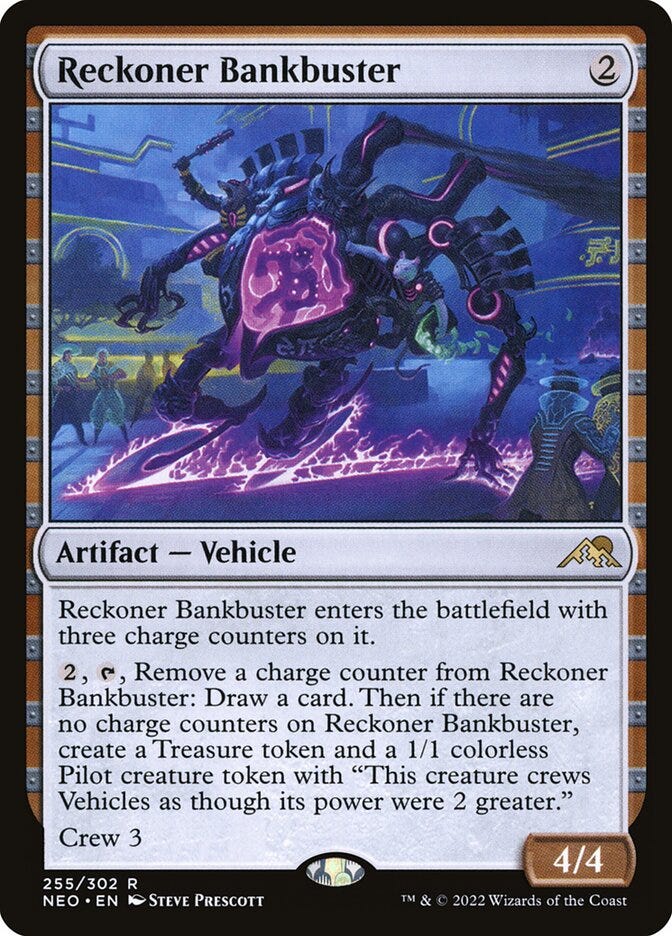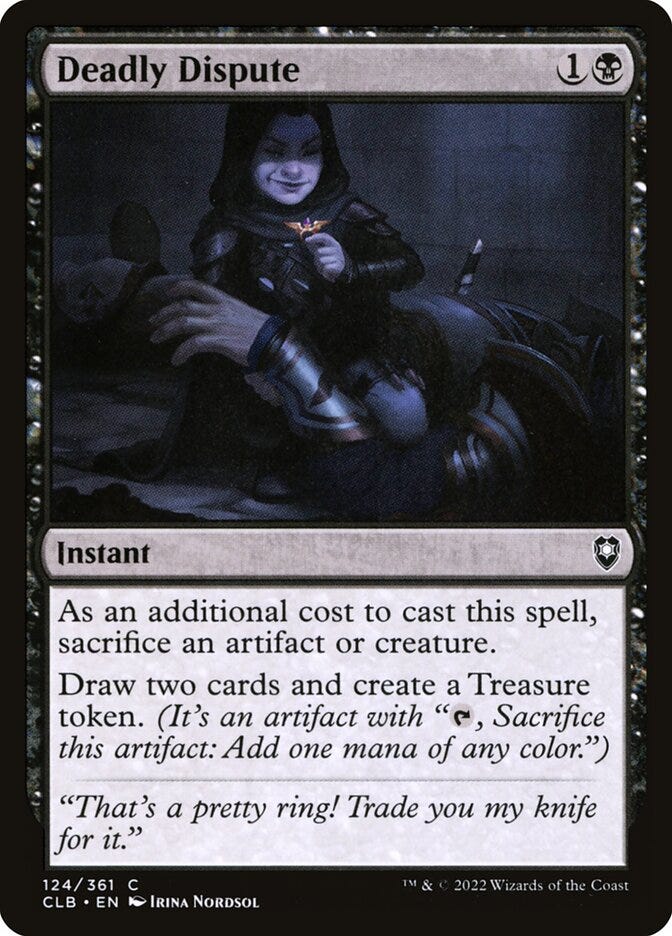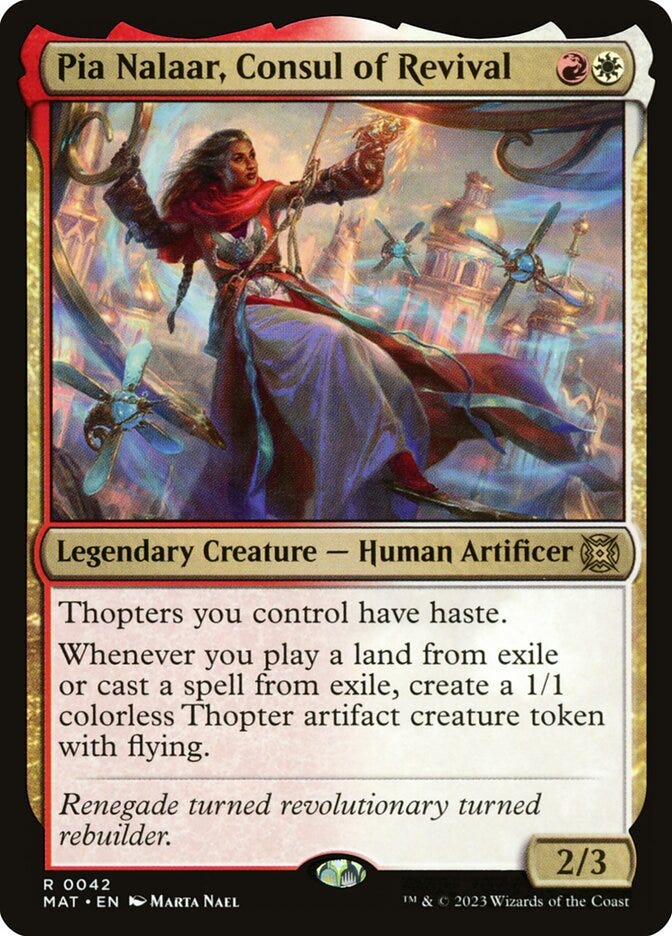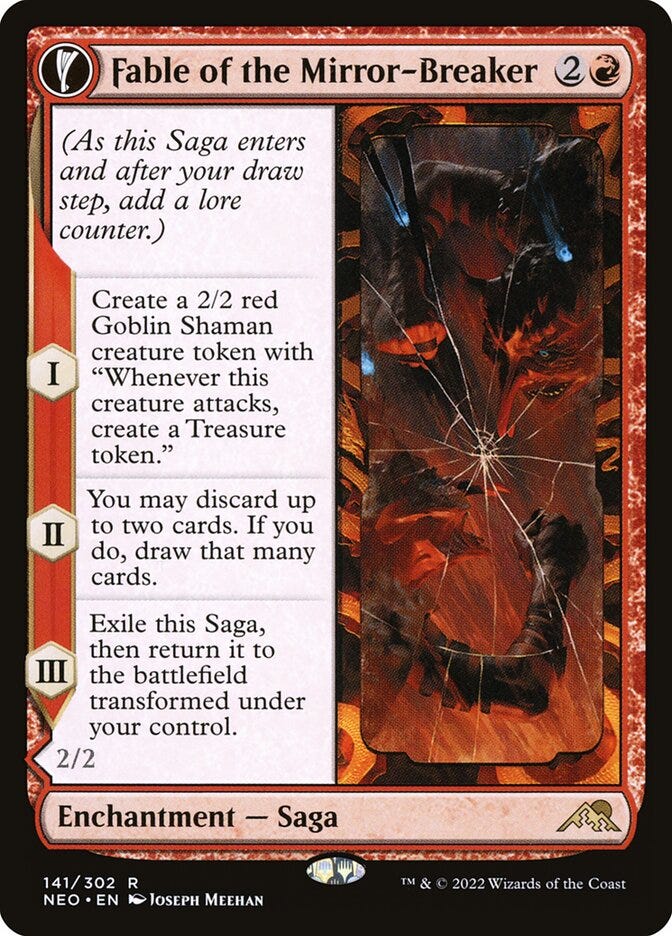I recently wrote a post on Reckoner Bankbuster and how it is one of the strongest cards in Pioneer. However, the more I think about it some of my reasoning in that post has the causation backwards and understanding what actually makes Bankbuster strong can help us learn how to build better decks in general.
My Original Reasoning: Reckoner Bankbuster is a powerful card I want to build around. To maximize its power I want to exclusively run creatures that can crew it i.e. creatures that are 3+ power.
A deck that runs Bankbuster and 3+ power creatures is the right conclusion. However, what if we invert the reasoning behind this conclusion.
New Reasoning: In Pioneer you exclusively want to run 3+ power creatures. Lower power creatures do not line up with the speed of the format and can be ignored by your opponent. In a world where every creature in your deck is 3+ power, Bankbuster becomes more powerful and you should also look to run it.
The important thing here is we have now learned a truth about the format (3+ power creatures are key) that can be applied more broadly beyond just Bankbuster decks.
This got me thinking about what other cards have constraints on them that actually “trick” you into building decks the way you should have been building them in the first place.
Lurrus
My beloved cat nightmare Lurrus is the classic example of this effect.
Default Reasoning: Lurrus is powerful and I need to lower my decks curve to be able to play it.
Invert the Reasoning: The most powerful decks will have very low curves, since we already are playing extremely low curve decks we should also play Lurrus because it is essentially free.
I am probably the person with the largest individual marginal contribution to Lurrus being banned in Pioneer and my brewing with Lurrus really taught me the lesson about the power of low curves. You will see most of my decks have meaningfully lower curves than most other decks in the format and I think it is one of the biggest reasons for my success as a brewer.
Deadly Dispute
Another one of my favorite cards that has taught me a lot about deck building in general.
Default Reasoning: Deadly Dispute is an extremely powerful card in Pioneer with its combo of Draw 2 for effectively 1 mana and the ability to reliably enable revolt on Fatal Push. To maximize Deadly Dispute I want to be able to play it on two, so we need to run more one drops. I also want to play cards that produce multiple pieces of cardboard like Voldaren Epicure and Bloodtithe Harvester.
Invert the Reasoning: One mana cards are what win games of magic, so you want to try and load your deck with as many that have impact as you can. Cards that produce multiple pieces of cardboard are also winning magic because they make it extremely hard to exploit you with removal. Once you’re playing a bunch of one drops a card like Deadly Dispute becomes much more viable.
Pia
A recent example of this effect where the card asks you to do the things you already should be doing.
Default Reasoning: To maximize Pia I want to surround it with the most cost efficient exile based card advantage cards, the most efficient one mana threats, and the most efficient one mana interaction.
Invert the Reasoning: The best midrange decks will use efficient one mana threats, one mana interaction, and efficient card advantage. Given that the most efficient card advantage in Boros is exile based, Pia will fit perfectly into the shell we already want.
Fable
Default Reasoning: Fable adds a maindeck rummage effect to my deck so I should run more lands.
Invert the Reasoning: People tend to not run enough lands and you want to run 25+ lands. In a world where I’m running 25+ lands regardless rummage effects become more valuable and thus Fable is a higher value card.
It was after playing a bunch of Fable that I came to my rule of thumb that interactive decks want to play 20 or fewer lands or 25+ lands. You do not want to be in the middle ground. More linear decks I suspect want to play 22 lands.
Cruise
Default Reasoning: Three cards for one mana is the most powerful effect in Pioneer, so I need to make sure I am constantly playing cards and run high velocity cards to ensure my graveyard is full.
Invert the Reasoning: Winning decks are constantly playing cards and have high velocity. Given that, it’s worth adding a bit of graveyard synergy to enable Treasure Cruise.
I saw someone make the point that Cruise is a problem in Pioneer because it makes it always right to just play your card instead of saving it. My immediate reaction was that it was a very good point.
But after giving it more thought I don’t think it’s a good point. With or without Cruise you want to play cards! This is Magic you win by playing cards, you lose when you don’t curve out and when you don’t play cards. Cruise is just encouraging you to do the thing you should be doing regardless.








